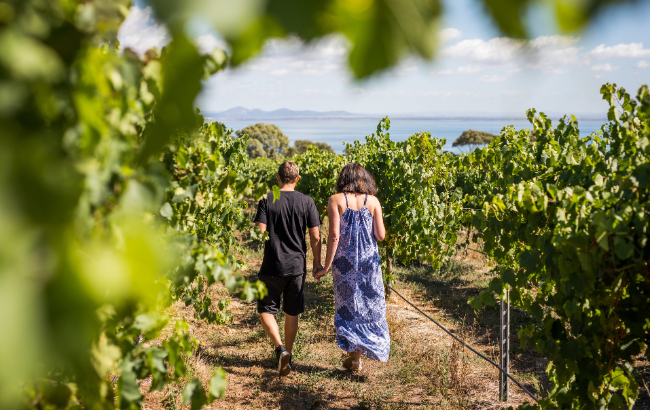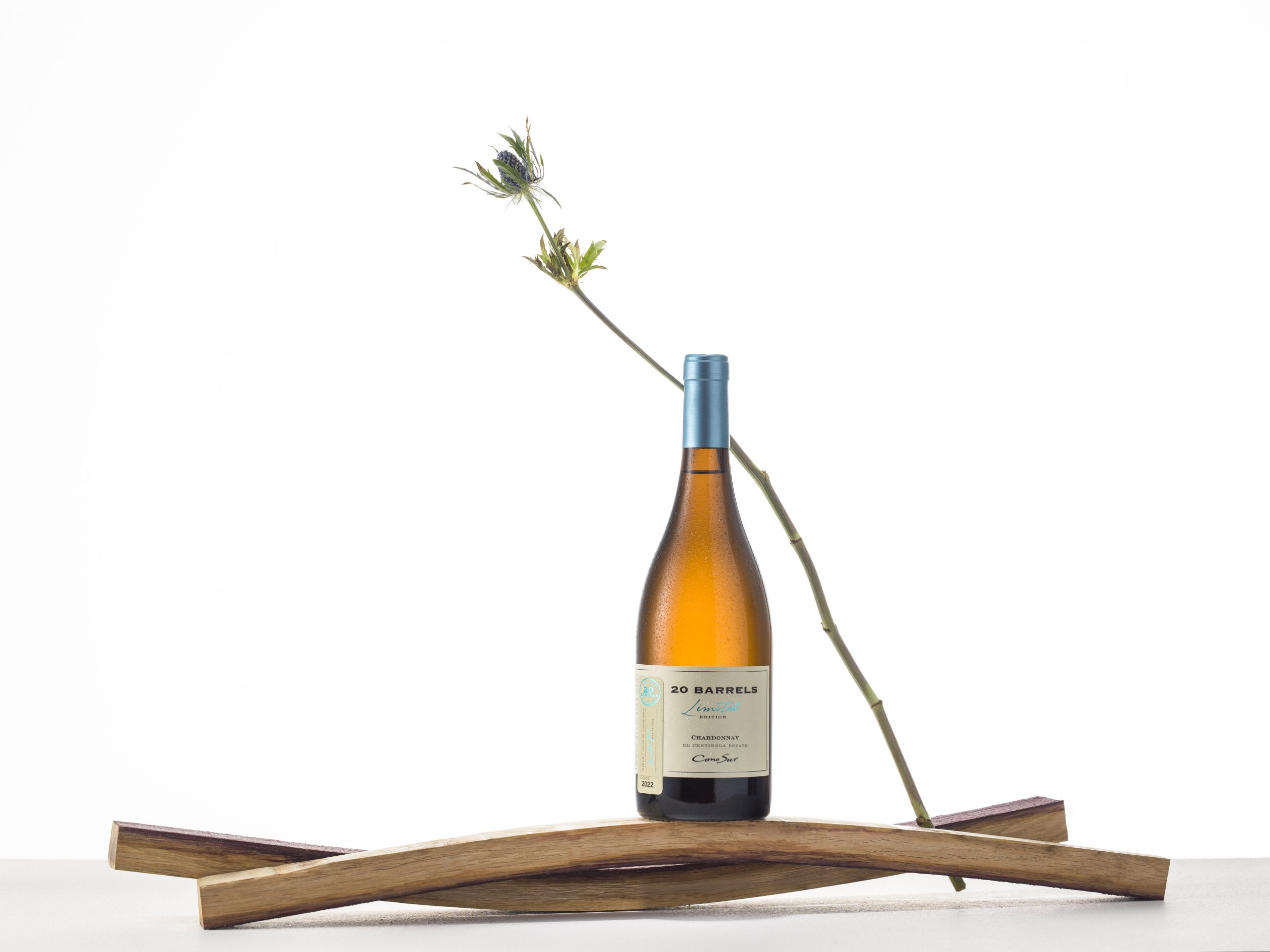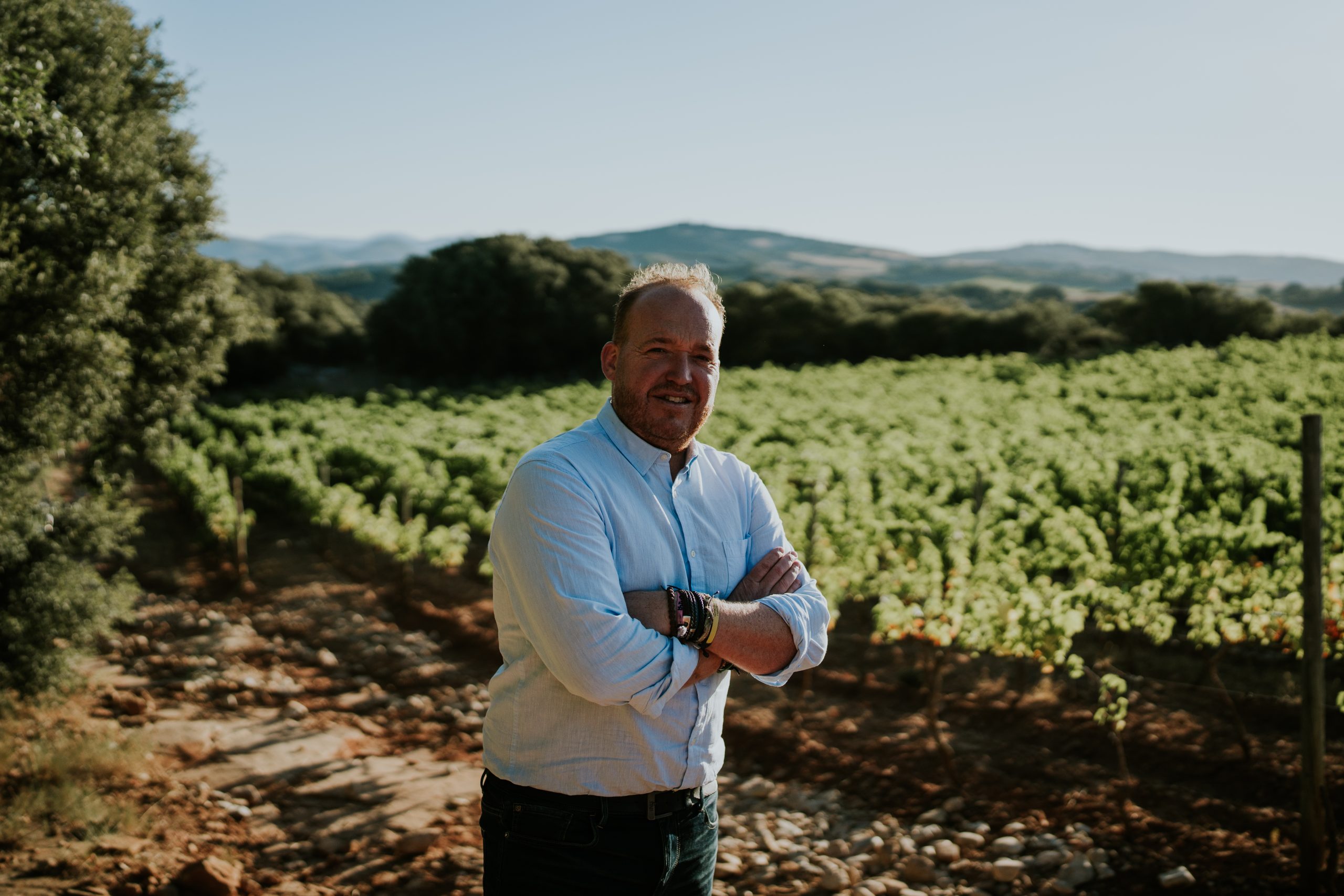This website uses cookies so that we can provide you with the best user experience possible. Cookie information is stored in your browser and performs functions such as recognising you when you return to our website and helping our team to understand which sections of the website you find most interesting and useful.
CHAMPAGNE – TRENDS: Staying ahead of the game
By db staff writerDespite being highly regulated, Champagne still offers producers a number of opportunities to stand out from the crowd with different styles. Patrick Schmitt hunts out the trendsetters
Innovation and Champagne aren’t two words commonly put together. Yes, Champagne’s very creation was inventive – sparkling white from black grapes – but most consumers just see it as the requisite fizz for special occasions. What they overlook is that in terms of packaging and promotion, the Champenois are as creative as they come. From Veuve Clicquot’s yellow wellies to Bollinger’s Mini Cooper, the Champenois are leaders in imaginative marketing and memorable branding. The designer ice buckets, enormous bottles and elegant flutes can all be traced back to this one region in northern France.
But stylistically one might ask, where’s the originality? Of course with a product that’s regulated, such as Champagne, it’s hard to modernise what’s in the bottle. However, the Champenois do have a surprising amount to play with. The sparkling wine could be white or rosé, non-vintage or vintage. Then there’s the option to make blanc de blancs, blanc de noirs, or use any of the six permitted grape varieties. And don’t forget sweetness levels, designated by the dosage, allowing the same base Champagne to pair sea-fresh oysters or marzipan-encrusted fruit cake. Beyond this there’s the chance to differentiate by source region or single vineyard. Finally, there’s ageing – not just in terms of maturity, but also amount of wood influence. You can even hold back bottles and disgorge them in time for late release.
So while you won’t see fortified Champagne flavoured with sloes, there’s a certain amount of elasticity in style, with the ability to draw on wine made from six different grape varieties from a 34,000-hectare region over a number of years, as well as vary sweetness levels from below three grams per litre to 35g per litre. Are the Champenois making the most of this with new product innovations? And if so, which direction are they heading in?
| Singled out Interestingly, there appears to be a boom at the very top of the Champagne pyramid, and one that requires no push from the trade. These are single-harvest and single-vineyard Champagnes – an approach anomalous to Champagne’s USP: blending not only from different years but different areas. These labels are rarely marketed to consumers or tasted by the trade, yet fetch high prices and sell out within weeks of release. Such almost “secret” Champagnes include Philipponnat’s Clos des Goisses, Krug’s Clos du Mesnil, Bollinger’s Vieilles Vignes Françaises, Billecart-Salmon’s Clos Saint-Hilaire, Veuve Fourny’s Clos Notre Dame, Cattier’s Clos du Moulin, Jacquesson’s Dizy Corne Bautray and Salon – a single-vineyard, single-cru and single-varietal Champagne. The success of such exclusive labels seems to be encouraging people to try the single-vineyard concept, notably Moët with its Trilogie range of three single-vineyard (and single-varietal) vintage Champagnes, as well as Nicolas Feuillatte, with its Grands Crus Collection, which are single-village, if not single-vineyard, vintage Champagnes. The latter has expanded to six villages and is on its third different vintage (1997). Then there’s Taittinger, which has introduced a non-vintage, single-vineyard Champagne, Les Folies de la Marquetterie, made from fruit from the Les Folies vineyard around Taittinger’s Château de la Marquetterie. These Champagnes, as well as rarer late-release older vintage prestige cuvées such as Dom Perignon’s Oenothèque, Krug’s Collection or Bollinger’s RD, are answering the super rich wine collector’s call for something not just more expensive but rarer. As Pernod Ricard’s Chris Seale says, referring to Perrier-Jouët’s Belle Epoque Blanc de Blancs 1999, released in September last year and sold in Selfridges for almost £200 a bottle, “There is a demand globally for super premium cuvées – it’s a case of, ‘you’ve given us Belle Epoque, what else can you give us?’” |
Sweet enough
Judging by the number of zero dosage wines launched in the last year it would appear those in France are taking the drier route. Although not a new concept, Champagne with no sweetening element is an increasing focus. Laurent-Perrier, a pioneer in pushing rosé, was also a leader in non-dosé Champagne, creating a Grand Vin Sans Sucre in the late 19th century and recreating it as Ultra Brut in the early 1980s. “The reintroduction coincided with the emergence of Nouvelle Cuisine in France – the motivation behind the Ultra Brut was a pure Champagne to match the food,” says David Hesketh MW, UK managing director at Laurent-Perrier.
Over a decade later, Drappier launched a Brut Nature 100% Pinot Noir and then a non-dosé version of its Carte d’Or. Others selling Champagnes sans dosage include Jacquesson, Tarlant and more recently Ayala, all of which are houses that specialise in low dosage styles – and the zero dosage tag is a useful technique in drawing attention to this. As Jonathan Stevens, marketing controller at Mentzendorff, UK agents for Bollinger, which owns Ayala, points out, “Ayala’s Brut Nature [zero dosage] is an indication of the quality of the base wine and there is a low dosage [7.5g per litre] in the rest of the range to back the point up. It is also a way of saying, ‘hello, we’re out here’.”
Andre Clouet is another Champagne house with a zero-dosage Champagne, which like Drappier is a blanc de noirs, while both Nicolas
Feuillatte and Pol Roger launched a non-dosé Champagne at Vinexpo this year, called Extrem and Pure Brut respectively, although the UK won’t see the latter until January 2008. Lastly, Devaux has just joined the sector with Ultra D de Devaux (see new products, page 97).
“Sans dosage is increasing,” says Hesketh, “and research has identified that there is a growing awareness of the style in the consumer’s mind.” Continuing, he adds, “There is potential through branding and clear differentiation to really develop the category.”
Certainly, projected warmer vintages due to climate change should help produce riper base wines, necessary for Champagne without any sweetening element, while, as the region approaches a production limit and costs escalate, it makes sense for the Champenois to develop new, higher margin lines, which are distanced from Brut NV, where the discounting activity tends to be focused.
There is also the possibility these Champagnes may be tapping into a global trend towards the search “for all things natural, pure and unadulterated”, as Bill Gunn, UK managing director at Pol Roger puts it. For example, Laurent-Perrier’s Ultra Brut is the Champagne partner of the Condé Nast Spa Awards. “It’s a logical fit because at fashionable spas people will want Champagne with low calories and purity,” explains Hesketh.
Nevertheless, it’s important to remember that this emerging and relatively innovative Champagne style is still niche. CIVC shipments even show the UK market in decline (see table above), although one suspects something has changed in the accounting between 2005 and 2006 that doesn’t reflect reported increases from the leading brands in this sector. Perhaps figures have been entered in the wrong category? (For instance, where would you enter Ayala and Tarlant’s rare combination: a zero dosage rosé?).
Pink power
But while zero dosage is probably at its teething stage, rosé has come through a somewhat self-conscious adolescence and emerged as a confident Champagne style. In fact, its sustained growth has surpassed all expectations, leaving most of the major brands with a supply shortage. “Rosé is red hot,” declares Terence Kenny, export director at Champagne Pannier; “Soaring,” says Colin Cameron, marketing manager at Percy Fox; and, as Chris Seale, head of Champagnes at Pernod Ricard UK, comments, “I wish I had five times as much to sell.”
Of course, product launches have grown in this category, in particular from Veuve Clicquot, which added a rosé last year. Even so, “We have a limited allocation,” says Sally Warmington, brand director for Veuve Clicquot at Moët Hennessy, adding that the style “is extremely popular and increasingly so – consumers just love the rosé style despite the dreadful summer”.
While this sustained growth is surprising, the boom in rosé is not a new phenomenon. On the other hand, accelerating sales of vintage Champagne are. “Vintage is a trend,” Françoise Peretti, director of the UK’s Champagne Information Bureau states emphatically. Warmington at Veuve Clicquot supports the view. “Along with rosé and prestige cuvées, vintage is outperforming the total Champagne category,” she says. For Cameron the situation is the same: “We have seen some good interest in vintage in the last six to 12 months for Pommery and Heidsieck.”
|
Sweet nothings Partner ContentWhy? “I think people who began to drink Champagne in the 1960s and 1970s still want Champagne but are now demanding softer, less lean, less aggressive products. It is one of the physiological effects of ageing,” he says. This has meant that “Champagne lovers of the 1970s who contributed greatly to the popularity of brut are now charmed by the sweetness of demi-sec, and it is returning to the lists of the best restaurants.” In particular, such Champagnes are perfect for drinking at the end of a meal, at afternoon tea, or whenever pastries or cake are served, increasing the number of possible occasions for a glass of fizz.
|
Aged appeal
Overall the vintage comeback is being bolstered by a number of innovations, the first of which came from Moët in March this year, when it announced that its vintage offering would now undergo greater ageing and be labelled Grand Vintage, starting with 2000. This coincided with a push on the style in the UK market and, according to Alex Field, senior PR manager at Moët & Chandon, the brand has “quadrupled by-the-glass sales”, with Moët vintage sales, on- and off-trade, up “48% Aug 07 vs Aug 06”.
Pommery, too, is looking to capitalise on an increased interest in vintage Champagne and is introducing a Pommery Pop Vintage – “which I believe is the first vintage to be launched in a 20cl bottle”, says Cameron. Even Bollinger has been creative in this sector with the elaborately packaged 2003 by Bollinger, a one-off vintage release to highlight an unusual year.
“We are seeing an explosion of interest in the middle battle ground,” says Louis Roederer UK brand manager, James Samson, summing up the situation. “Sales of Brut Premier and Cristal are still doing really well, but we have seen a huge increase in sales of Brut Vintage.”
What’s driving this change? “People are more knowledgeable about wine and the same is true for Champagne,” says Seale, adding, “People want to learn and experiment.” Many in the trade are making this process easier. For example, Veuve Clicquot has introduced vintage Champagne flights in “key outlets”, involving three Veuve Vintage Champagnes with an apéritif plate. Moët, as noted above, has been pushing vintage by the glass, and in the near future, Pol Roger is planning a campaign centred on this style.
In short, producers are being moved to push such styles by the urge to extract higher margins from Champagne in the wake of increasing costs, as well as the need to keep consumers enthused. “The general increase in demand for Champagne and the high prices paid for the grapes make for a scenario where the producers/houses want to create value by getting the ‘regular’ Champagne aficianado to trade up,” explains Pannier’s Kenny.
Greater understanding?
So the consumer is keen to try something new and the trade is hoping to increase margins – but how much does the average drinker really understand when it comes to Champagne’s stylistic differences? Do they know why they are paying more for vintage, zero dosage or rosé? Some report that where drinkers are willing to trade up, it is only within “trusted” brands, implying a lack of confidence – or knowledge – in what they are buying. As Seale puts it, “When experimenting on a wine list consumers do need a comfort factor… and outside the Grand Marques there is a level of risk.” Without such brand reassurance, a hand-sell or detailed information is necessary, which probably explains why the trend towards those Champagnes with more subtle stylistic differences – in other words those that aren’t pink – is less evident in the multiple grocers.
“Whether a Champagne is blanc de blancs, blanc de noirs, premier or grand cru is largely irrelevant in the eye of the average customer,” explains Graham Nash, product development manager for Champagne at Tesco. “Decisions are more likely to be made on brand/house name, price and awards.”
As for vintage, Nash believes “it is still not totally understood”, while Dee Blackstock MW, Champagne buyer at Waitrose, stresses the need for an iconic name for this sub-category in a retail environment. “Vintage, if dressed up as prestige, ie, Cristal, is growing, or would be if it was possible to get it. If it is not seen as a prestige cuvée, then it is not moving as fast.”
Nevertheless, such a situation is merely motivation for the Champenois to be creative, after all, necessity is the mother of invention. And the Champenois have far from exhausted their range of techniques to enthral the consumer and take them in new directions.
Leaders of the pack
Pommery, for example, came up with the idea of “seasonal” Champagnes back in 1998 to keep year-round consumer interest in the brand. Last year, all four seasons were completed, when a “Springtime” rosé was added – with a higher percentage of Pinot Noir in the blend – and a “Falltime” blanc de blancs, with an increased dosage and longer cellaring time. Today, regulars in those outlets (such as Noble House Leisure’s pubs and restaurants) where Pommery’s seasonal collection is stocked in rotation, can be stimulated by a range of styles without the need to understand Champagne’s traditional terminology. “It keeps the Pommery name going and keeps interest in Champagne going,” comments Cameron. Further, with the distinctive Pommery Pop range, with soon to be added vintage Pop, this house’s reputation for innovation is reinforced.
Other houses are also making a name for themselves when it comes to challenging the Champagne norms. Jacquesson is certainly one, with numbered cuvées in place of a standard non-vintage, and its vintage Dizy Corne Bautray – a single-vineyard Chardonnay from old vines, vinified in wood and non-dosé. Meanwhile Nicolas Feuillatte has been busy with several new styles (see box on page 68), in particular a wood-aged Champagne called Cuvée 225. Taittinger too has been developing new products which “reflect a trend for more ‘specialist’ Champagnes,” explains Lynn Murray, marketing director at UK agents Hatch Mansfield. These include Nocturne, a non-vintage version with a higher dosage, 20 g/l. Finally, something of a novelty is Moutard’s Cuvée 6, which not only uses all six permitted grape varieties in Champagne, but also old Meursault barrels for fermenting the wines.
Overall, despite the excitement generated by these more innovative producers and unusual blends, the majority of Champagne is still Brut NV and the stylistic trend of the moment is most clearly rosé, followed by an emerging demand for vintage. On a smaller scale, the likes of zero dosage and single vineyard Champagnes are definitely on the increase, each one to meet a different demand – something purer and rarer respectively.
There appears to be a real urge by producers to launch something original to excite the trade and consumers. This is both an exercise in publicity and an attempt to add value as production costs increase. However, it should be remembered that stylistic inventiveness is hampered by the laws of Champagne, above all cellaring time – especially with vintage offerings – making “time to market” realistically around five years. For this reason, houses must forecast trends accurately. “There is always a big gap between the date you realise you need more and the release date,” says Nicolas Feuillatte’s Dominique Lahure.
Finally, those interested in the academic details of Champagne may be increasing, but are still few and far between. For most, Champagne is still simply the requisite fizz for special occasions, with perhaps one added complicating element – should it be white or rosé?
© db October 2007





